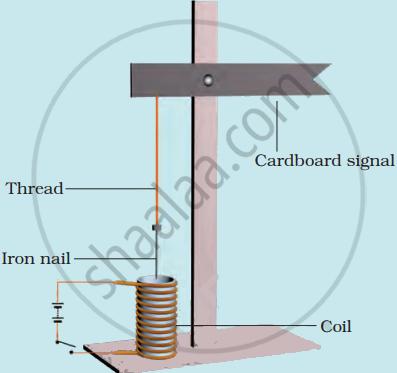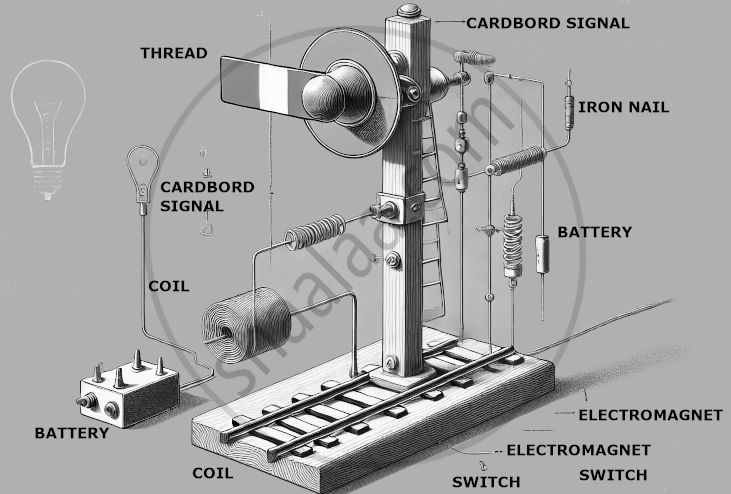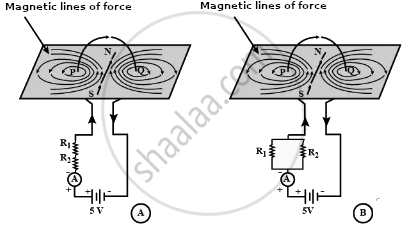Advertisements
Advertisements
Question
Using an electromagnet, you can make a working model of a railway signal as shown in figure.

Solution

Working Model of a Railway Signal Using an Electromagnet
Components:
- Cardboard Signal: Indicates the railway signal.
- Electromagnet: Coil wrapped around an iron nail.
- Battery: Powers the electromagnet.
- Switch: Controls the electromagnet.
- Thread: Connects the electromagnet to the cardboard signal.
Steps:
-
Setup:
- Mount the cardboard signal on a stand.
- Attach a thread to the signal and pass it over a pulley to the electromagnet.
-
Electromagnet Creation:
- Wrap a coil of wire around an iron nail.
- Connect the coil to a battery via a switch.
-
Operation:
- Turning on the switch powers the electromagnet.
- The electromagnet pulls the iron nail, moving the thread and changing the signal's position.
- Turning off the switch deactivates the electromagnet, allowing the signal to return.
Visual Representation:
The provided image illustrates the setup with labelled components, demonstrating how the electromagnet controls the railway signal.
RELATED QUESTIONS
An electric bell has an electromagnet.
If the direction of electric current in a solenoid when viewed from a particular end is anticlockwise, then this end of solenoid will be:
(a) west pole
(b) south pole
(c) north pole
(d) east pole
The north pole of a long bar magnet was pushed slowly into a short solenoid connected to a galvanometer. The magnet was held stationary for a few seconds with the north pole in the middle of the solenoid and then withdrawn rapidly. The maximum deflection of the galvanometer was observed when the magnet was ______.
Write the correct option by observing the figures.

Observe the following diagram and choose the correct alternative:

(b) State whether the following statements are true or false:
(i) Magnetic poles exist in pairs.
Unscramble the following words:
HTRCO
______ cells cannot be recharged after use.
A wire with green insulation is usually the live wire of an electric supply.
Make four electromagnets with 20, 40, 60 and 80 turns. Connect them one by one to a battery of 2 cells. Bring the electromagnet near a box of pins. Count the number of pins attracted by it. Compare the strengths of the electromagnets.
